Rickubis Bird
Page featuring: Ibises
This page was born
02/15/2025, by moving material I had on other pages. Rickubis
designed it. (such as it is.) Last update:
Images and contents on this
page copyright ©2002-2025 Richard M. Dashnau
Go
back to my home page, Welcome to rickubis.com
Go back to the RICKUBISCAM
page.
----------------------------------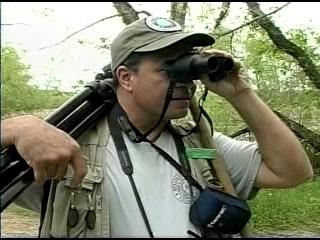
Welcome to Brazos Bend State
Park. That's me on the trail. One of the most popular reasons for
people to visit BBSP is to see the birds. Over the years,
I've captured a few
pictures and video clips of Ibises, and am collecting them
here.
01/21/2024
It was cold again at BBSP. When I checked the temperature
at the Forty Acre Parking Lot, it was 39.2°F, almost the same as the
previous
weekend. But the air on this
day was very damp. This damp air, when moving, can draw the heat right
out of me. It's always colder down near the Observation Tower, mostly
because of the wind blowing off of Pilant Lake. The morning was
overcast, and the air was hazy--which is further indication of hold
cold it would feel. Another temperature
reading from that area showed 39.3°F.
But this time there was the wind off of Pilant Lake.
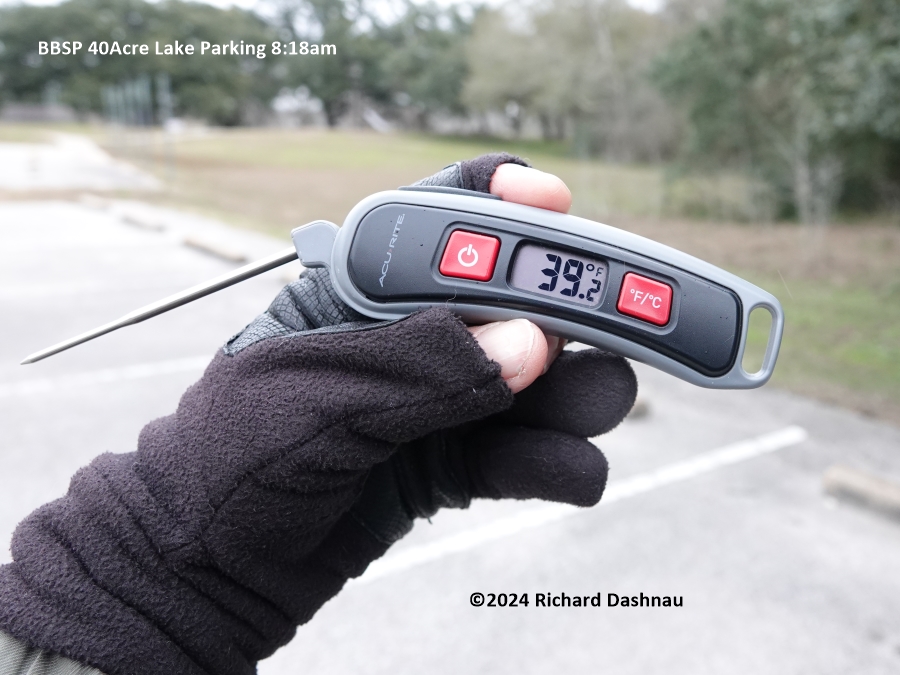
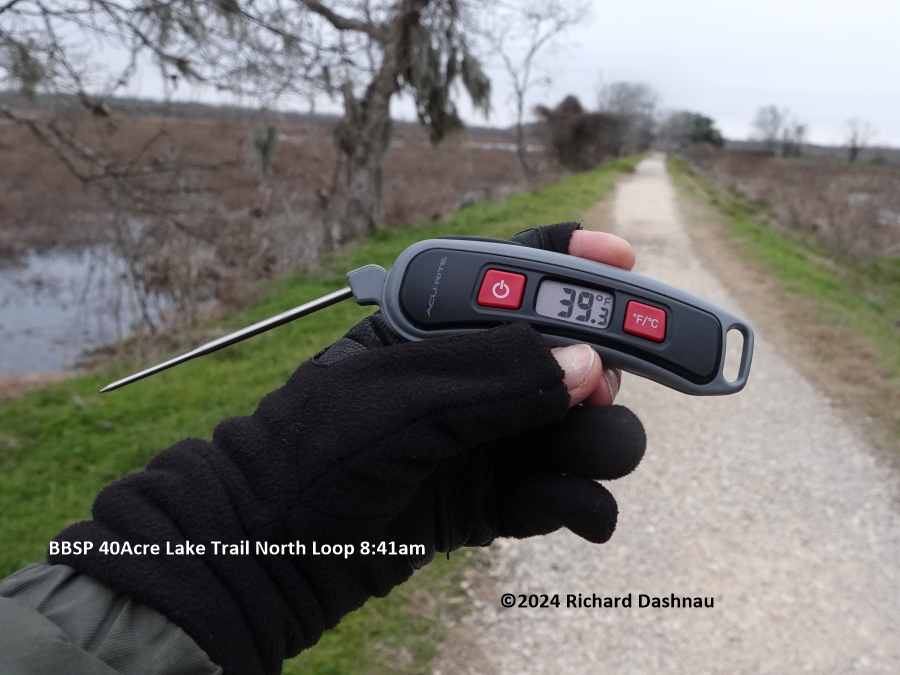
Last
weekend, I'd watched dark Ibises (most likely White-faced Ibis (Plegadis chihi)
foraging on the floating plants in Pilant Slough. They seemed to be
picking at, and
trying to eat various round plant objects--maybe parts of the
Water Hyacinth (Eichhornia crassipes)
floating everywhere. Today, I saw one of them with the kind of thing
I normally see them catch. It was a frog, and from the markings
I could see (large, oval spots on the back), probably a Southern
Leopard Frog (Lithobates sphenocephalus).




The
following images demonstrate something that still surprises some folks
when I call attention to it. Wading birds are not equipped to break
down animal prey into
smaller parts. Whatever they eat, they swallow whole. This could lead
to quite a struggle if the prey is large compared to the size of the
bird's head. In this case, the frog
wasn't very mobile (probably because of the cold) and didn't pose much
of a problem for the Ibis. There is video, but I probably won't upload
it. The light on this day was
difficult to work with--especially for a non-photographer like me. I
tried shooting the last 4 images at high shutter setting and adjusted
ISO. They came out REALLY dark,
so I enhanced them as well as I could. (flash!?!? I don't
even try to use one.) I walked to Elm Lake, and then North to
New Horseshoe lake. It's not evident from this article,
but there were many amazing birds active all around while I walked,
even with the cold. I took a few more temperature readings at
New Horseshoe lake, then tuned back.



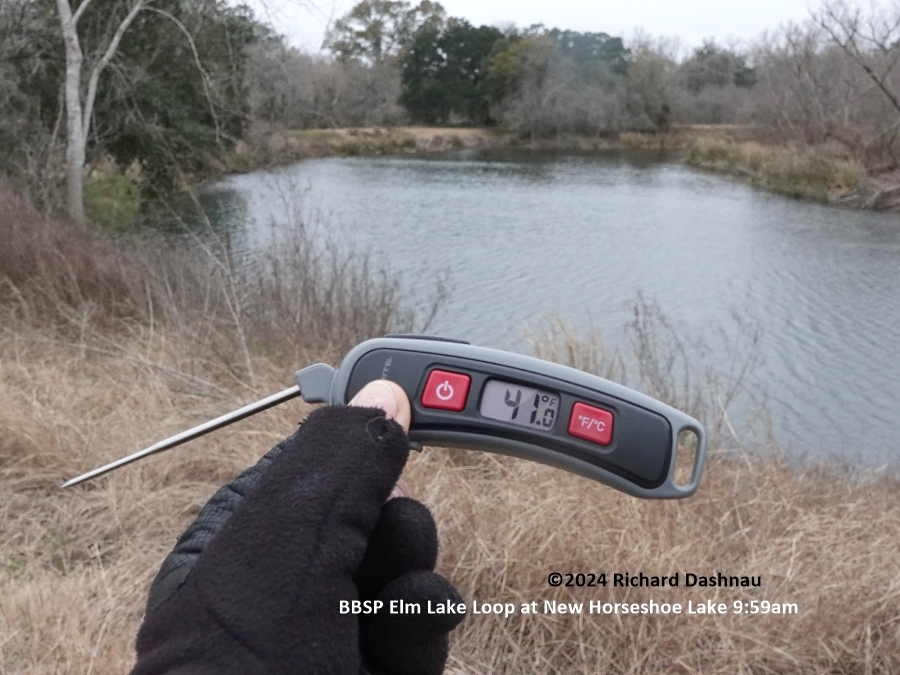
On
01/14/2024 I went
to BBSP. I almost didn't because of forecasted rain and a cold
front. But, I decided to go anyway, spend a couple hours outside,
then work in the Nature Center. When I checked the temperature
at the Forty Acre Parking Lot, it was 40°F. It's always colder
down near the Observation Tower, mostly
because of the wind blowing off of Pilant Lake. The morning was bright
and clear, and White-Faced and White Ibises were foraging on the
floating plant mass near the
Southeast corner of the tower. I'm pretty
sure they were White-Faced Ibis (Plegadis
chihi)
but
I have a hard time telling them apart from Glossy Ibis (Plegadis
falcinellus)--as do
many other folks. Some of these photos
show that they had red eyes--which is one way to tell they were
White-Faced.




In
any case, the low morning sunlight enhanced the wonderful metallic
green/bronze of their feathers. A few White Ibises (Eudocimus
albus) were foraging with them. At
other times, I've seen the Ibises pulling prey out of this mat, but
have had a hard time identifying what organisms were being caught.
When I watched closed on this day,
the Ibises seemed to be picking up plant buds or plant root bulbs. A
couple of the pictures above show this. This
video clip shows many examples of this in slow motion.




03/07/2021
I started as a Volunteer
ranger/interpretive guide at Brazos Bend State Park in 2001. Starting
then, I went to BBSP at least once a week--EVERY week; although
there were some periods where I had to go "on hiatus" due to occasional
medical procedures. In a single day, I could interpret for over 100
people...or 10. I feel fair average of contacts
would be 50 per week. 50 folks per week x 51 (weeks in a year)
would be 2550 folks per year. 2550 x 19years is.... a LOT
of people (48,450 --but maybe take off about 6 months' worth
because of the medical stuff (that's about 1200 less)). That still
adds up to a lot of folks that I've experienced the park with. It
was great fun, and the park is a great place. And then
our viral visitor appeared. And I stopped going to BBSP in March of
2020. There were many factors involved with this--all of us know
the adjustments that were made. I missed the park.
I can't remember exactly, but I did go out to BBSP a few times during
2020. I also went out a few times in 2021. I decided I should go
once more while there was still some controls in place
so I volunteered on March 7. During the 6 hours I was there I
spoke with 100 people while wearing a mask and maintaining distance.
It was great as usual! There is always a lot
to see at BBSP, but I think it will be a while before I go out there
again. If you live in Texas, you can probably figure out why after
March 10. What did I see today? Well, here we go.
There was a mother Coypu(aka
Nutria-Myocastor coypus) with at least 2 babies on a little mat
that they made from Giant Cutgrass. They were at least 50 yards away, so
I couldn't
see too much. I passed them again on my way back to my car, and pointed
them out to a number of visitors then. One of the babies went off
to forage by itself, and I noticed the Ibis
behind it, so I tried to get some pictures with them both included. They
were quite far apart, so it was hard to get them both in focus.
That is not a White Ibis, but either a Glossy
Ibis(Plegadis falcinellus), or a White-faced Ibis(Plegadis chihi).
I've seen people who can identify birds a lot better than I can
arguing over identification of one of these. I know
it's one or the other. I can't really pick out the eye color, but
the legs are more gray than pink or red. From what I can find,
Grey legs would make it be Glossy Ibis. The last 3 images
are frames from a video clip.




Ibis
is at least 20 feet away from coypu.
Three
moments as the Ibis paused. Each
view is a bit different.
Just the Ibis
Grey legs, not red or pink.
03/01/2020 (added
2/14/2025) This White
Ibis (Eudocimus albus) caught a Broad-banded Water Snake
(Nerodia faciata) at Brazos Bend State Park.
The two images are photos, and I used captured clips to make this edited video.
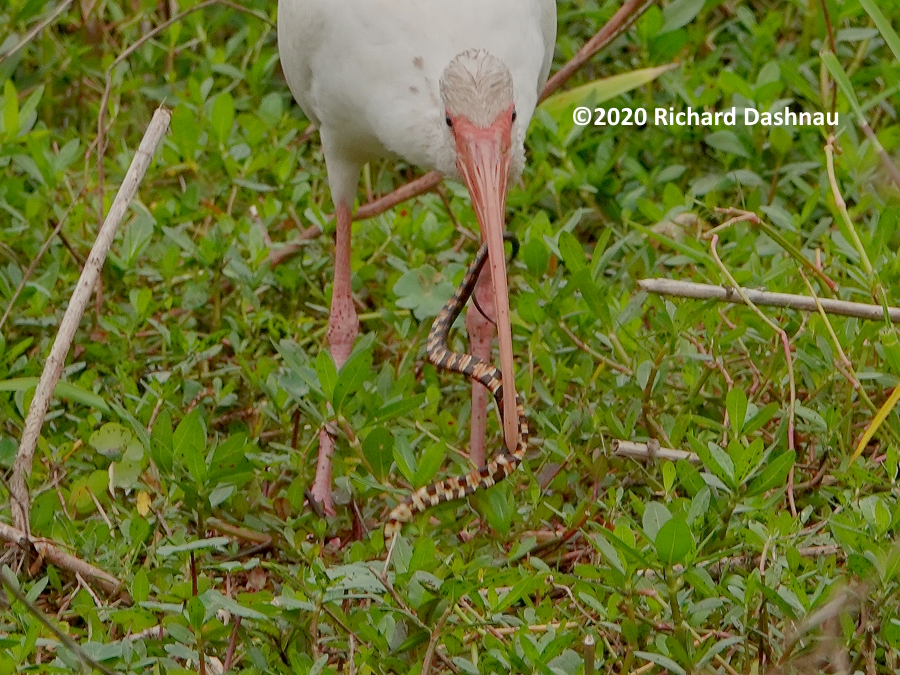
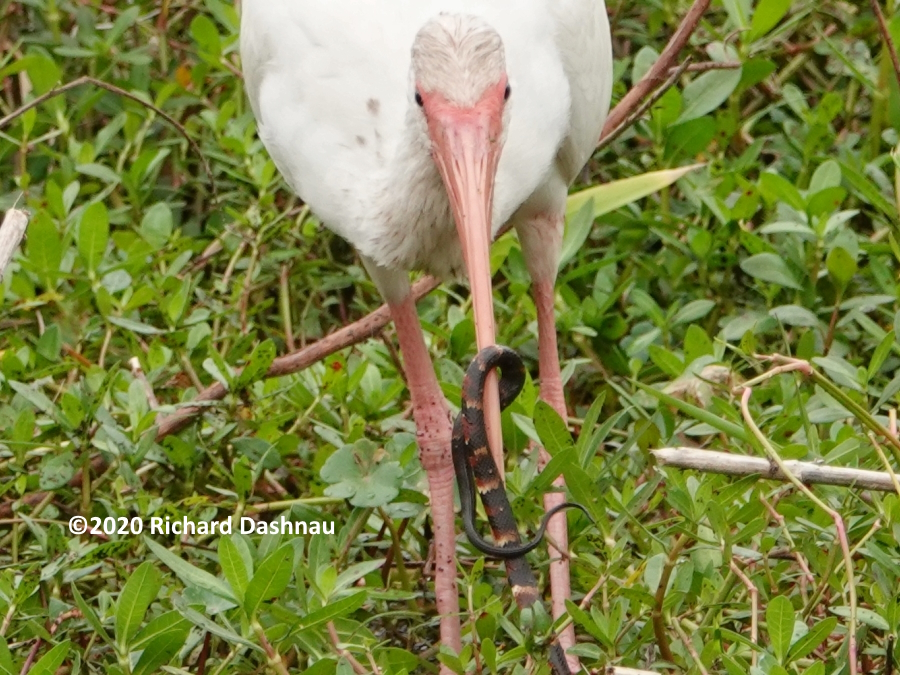
11/30/2008 As a last
experiment, I took some photos and video clips of some White Ibis
foraging. I was able to shoot some video of a White Ibis taking
off. I shot the video at 420 frames per
second. When I reviewed that clip, I was amazed. The Ibis' wings
unfolded and went straight UP to meet over the Ibis' back. Then
with just ONE downward flap, the Ibis becomes airborne. The
images below are some frames pulled from the clip. The clip
can be seen here
(wmv
4.0
mb).
 -
-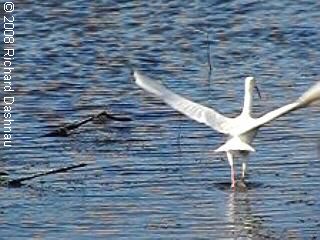 -
-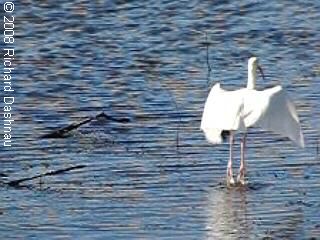
WINGS
GO STRAIGHT UP!
WINGS
PUSH
DOWN
IN
THE AIR!
12/03/2006--As
I hurried back to lead my hike, I saw a group of White Ibis in
some trees, and this one posed for me. I just liked the picture,
which you can see below.
-------------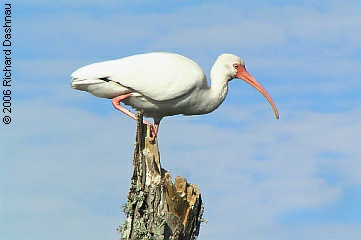 ---------------------------
---------------------------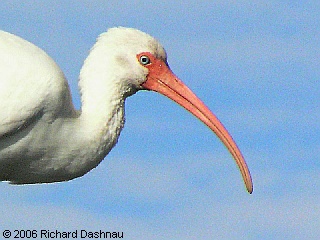 ---
---
------------------------NICE IBIS!-------------------------------------------------
-------NICE
IBIS CLOSER!
Go back to my
home page, Welcome to rickubis.com
Go back to the
RICKUBISCAM page.
Go back to the See
the World page.


























 ---------------------------
--------------------------- ---
---